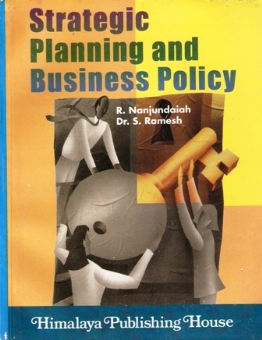A major task that the top management is called upon to perform is “Strategic Management.” This is one of the lessons that “management boom” has taught during the last 40 years. All over the world, management, its competence, composition, specialization, attitude and character have been seriously discussed, because experience as well as research studies have clearly shown that the quality and depth of management is the crucial factor in the prevention of loss, instability, and low profits and for the acceleration of the growth rate of business firm and the economy. Never before has the need for the study and comprehension of the top management, its competence and composition been felt so acutely as today in the context of what is referred to as the “turbulent times,” which is characterized by militant trade unions, their demands, government regulation, steep inflation, unemployment, poverty and socialism.
Management is therefore, studied in the less developed countries more seriously than before to preserve the “pluralistic economy,” democracy and the freedom of the individual. The lesson that the Japanese miracle teaches has reinforced the need for market economy, despite some of its shortcomings, and the minimum role of the State in the indirect control and regulation of private enterprise. The cost of State planning is much more than the benefit; and this cost is evident in gross inefficiency, waste of resources, bureaucracy, corruption and the sapping of the initiative and motivation of the individual. Slowly, the less developed countries have learnt this unsavoury lesson and turning to market mechanism. India, which has drawn very serious criticism from friends and well wishers here and abroad, has to reverse its socialist planning, because of its very serious mistakes, lapses and shortcomings which is being done gradually since 1992.
What is the role of the top management in the task of maintaining and strengthening the mption, because of gross inefficiency and corruption; and it is most unlikely that the Government can do anything about it. Instead of increasing capital formation, which is a key factor in economic growth as it is in heavy and capital intensive industry, they have thwarted it and hampered the growth of GDR Indian industries are facing recession, why? Because it is due to lack of strategic planning.
The purpose of this book is to provide a textbook for advanced students of MBA and M.Com. Of Indian universities and colleges, a handbook for practicing’ managers, especially Managing Directors, General Managers, and Directors and Heads of Functional Departments in medium and large-scale companies. We sincerely hope that university professors will find this book to be very interesting and useful in educating the prospective managers under their guidance. We also hope that this will stimulate top managers to think creatively about their own tasks and responsibilities and to take steps to reorganize joint stock companies (corporate sector) on the right lines (Gopalakrishna, Corporate Governance, 1998).
The book deals with introduction to the subject and economic welfare. It seeks to explain the evolution and development of strategic planning. It explains the reasons the for increasing important of this style of planning all over the world and the state-of-the-art in India and urges top business leaders to realize their fundamentals task. It also examines weakness of Indian Socialist planning and prescribes strategic planning as the best remedy. It also brings to the Strategic Management, its pay-off, diversification and organization behavior.
Contents :
Introduction
Chapter 1 Overview of Strategic Management – Utility and Application
Chapter 2 Strategic Management Process – General Management Objective of Business
Chapter 3 Strategic Management Process – General Management – Some Indian Cases
Chapter 4 Corporate Strategic Formulation – Mission Or Purpose of Business – Ducker’s View – Some Indian Cases
Chapter 5 Assessing The External Environment – Situation Analysis – Opportunities and Threats Analysis – Some Indian Cases
Chapter 6 Technological Forecasting
Chapter 7 Environment Forecasting, Sales Forecasting Techniques
Chapter 8 Industry Analysis – Michael Porter’s Concept – Strategy of Firm – Key Success Factors(KSF)
Chapter 9 Company Profile-Internal Analysis of The Company – Key Success Factors-Competitive Advantage
Chapter 10 Industry Evolution Process and Competitive Advantage
Chapter 11 Strategic Planning Development – Indian Case Studies
Chapter 12 Social Responsibilities
Chapter 13 Designing Organisation Structure
Chapter 14 Decentralisation
Chapter 15 Strategy and Structure-Restructuring
Chapter 16 Diversification – Strategy for Growth
Chapter 16 Diversification – Strategy for Growth
Chapter 17 Strategic Alternatives- Choice of Strategies and Their Evaluation
Chapter 18 Merger (Takeover-Entry Into New business) Indian Case Studies
Chapter 19 Expansion Strategy-Growth Strategy
Chapter 20 Role of Top Management-Task of Top Management
Chapter 21 Strategies for Small Business Units: Profit Centre
Chapter 22 Strategies Control and Implementation
Chapter 23 Implementation of Strategies Planning
Chapter 24 Functional Areas Structure – Marketing, Finance, HRM R & D and Production
Chapter 25 Production Management
Chapter 26 Financial Planning-Capital Budgeting
Chapter 27 System Approach to Personnel/HRM
Chapter 28 Marketing
Chapter 29 Annual Objectives And Budgetary Control And Mis
Chapter 30 Organisational BEhaviour
Chapter 31 Do Indian Companies Survive?







